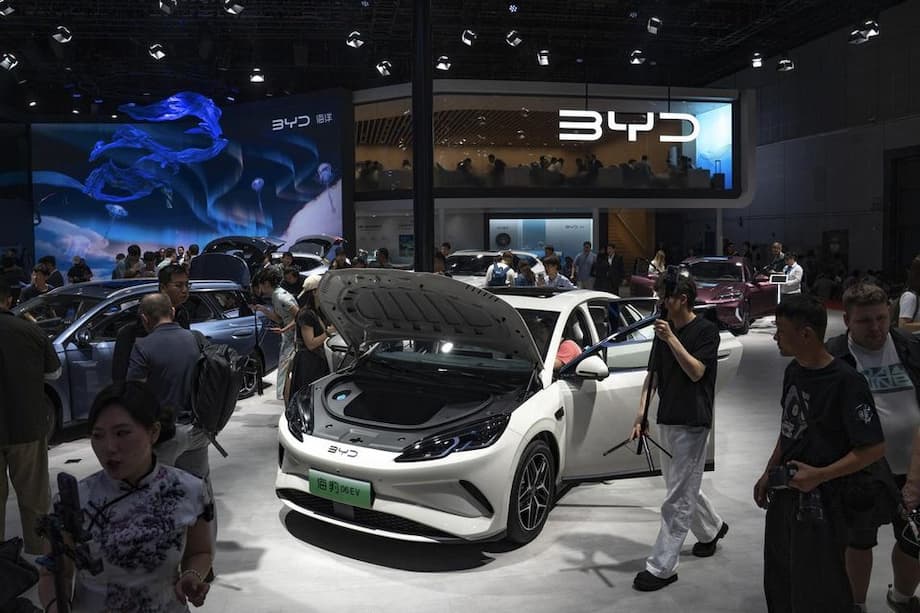China’s Clean Energy Revolution: From Copycat to Global Leader
In just over two decades, China has transformed itself from a perceived imitator of foreign clean energy technologies into the world’s leading innovator and manufacturer of renewable energy solutions. In 2000, Chinese applicants filed a mere 18 internationally competitive clean energy patents. By 2022, that number had soared to over 5,000, outpacing the United States and Europe and signaling a seismic shift in the global energy landscape. Today, China dominates not only in patent filings and research output but also in the deployment and export of solar panels, wind turbines, batteries, electric vehicles, and emerging technologies like green hydrogen and smart grids.
- China’s Clean Energy Revolution: From Copycat to Global Leader
- Strategic Policy: The Engine Behind China’s Clean Energy Boom
- “Economic Darwinism”: How Competition Drives Innovation
- Leapfrogging Technologies: From Wind and Solar to Green Hydrogen and Smart Grids
- Scaling Up: The World’s Largest Renewable Energy Projects
- Global Impact: China’s Role in the World’s Green Transition
- Challenges and the Next Frontier: Beyond Wind and Solar
- Comparative Perspective: Why Is China Outpacing the US and Others?
- Broader Economic and Social Impacts
- In Summary
This transformation is the result of deliberate government strategy, massive investment, and a fiercely competitive domestic market. The implications are global: as the world races to decarbonize and confront climate change, it is increasingly reliant on Chinese innovation and supply chains. This article explores how China achieved this remarkable ascent, the policies and market dynamics that fueled it, and what it means for the future of clean energy worldwide.
Strategic Policy: The Engine Behind China’s Clean Energy Boom
China’s clean energy revolution did not happen by accident. It was the product of a series of strategic government interventions, most notably the “Made in China 2025” initiative launched in 2015. This program targeted technological sovereignty in key sectors—renewable energy, electric vehicles, robotics, and more—by providing companies with loans, subsidies, tax breaks, and support for acquiring foreign competitors. The goal was clear: achieve domestic dominance and global competitiveness in strategic industries.
The results have been dramatic. Chinese clean-tech firms now control the lion’s share of both domestic and international markets. In solar manufacturing, for example, China accounts for over 80% of global capacity, driving down prices and making solar power more accessible worldwide. In 2023 alone, China produced 861 gigawatts (GW) of solar panel modules—far exceeding global demand—and added more new solar and wind capacity than the rest of the world combined. This scale has allowed Chinese firms to achieve cost advantages that competitors struggle to match.
Government support has also extended to research and development (R&D). China now hosts nearly 50 graduate programs focused on battery chemistry and metallurgy, and its researchers produce the majority of widely cited technical papers on battery technology. According to the International Energy Agency (IEA), China’s annual patent filings for emerging clean energy technologies—including batteries, carbon capture, energy storage, and smart grids—have surged nearly tenfold between 2010 and 2022.
Financial mechanisms like green credit have played a crucial role as well. Studies show that green credit policies—loans and financial incentives tied to environmental performance—significantly boost technical innovation in clean energy firms. These policies encourage companies to invest in R&D and adopt new technologies, accelerating the pace of innovation and deployment.
“Economic Darwinism”: How Competition Drives Innovation
China’s clean energy sector is not just the product of top-down planning; it is also shaped by intense domestic competition. The government’s approach has often been to “let a hundred flowers bloom”—offering subsidies and support to many companies, then allowing market forces to weed out the weaker players. This process, sometimes described as “economic Darwinism,” has fostered a culture of relentless innovation and efficiency.
For example, in the battery sector, Chinese companies like BYD and CATL have overtaken global competitors by developing lighter, longer-lasting, and cheaper batteries using iron and phosphate instead of more expensive and less abundant materials like nickel and cobalt. These advancements have made electric vehicles (EVs) safer, more affordable, and more convenient, propelling China to the forefront of the global EV market. In 2024, China produced nearly 70% of the world’s electric vehicles and held 60% of the global EV battery market.
Intense competition has also led to overcapacity in some sectors, such as solar panels, resulting in pricing pressures and slim profit margins. However, this has made green technologies more affordable worldwide, benefiting consumers and accelerating the global transition to clean energy.
Leapfrogging Technologies: From Wind and Solar to Green Hydrogen and Smart Grids
China’s clean energy innovation extends beyond established sectors like solar and wind. The country is now leading in next-generation technologies that are critical for deep decarbonization and the electrification of hard-to-abate sectors such as heavy industry and long-distance transport.
One area of rapid progress is green hydrogen. Backed by massive investments, Chinese companies have taken the global lead in low-carbon hydrogen-related patents, surpassing Japan. According to Japanese research firm Astamuse, China now ranks first in overall competitiveness in green hydrogen, with its firms filing twice as many patents annually as Japan since 2020. The cost of hydrogen production equipment in China is now just a quarter of that in Europe, spurring local demand and positioning China as the world’s largest hydrogen market, accounting for 30% of global demand.
China’s national hydrogen strategy, unveiled in 2022, aims to raise annual green hydrogen production to 100,000–200,000 tons by 2025—a target already surpassed. Companies like LONGi and Sungrow, leveraging their strengths in solar and wind, are rapidly expanding into the hydrogen sector. This momentum could soon extend to hydrogen-powered vehicles, with China already leading in hydrogen truck infrastructure and fuel costs significantly lower than in Japan.
China is also investing heavily in smart grids, advanced energy storage, and carbon capture technologies. The government’s latest five-year plans emphasize the need for breakthroughs in these areas to build a flexible, adaptive electricity system capable of integrating vast amounts of intermittent renewable energy. Digitalization, AI-powered grid management, and long-duration energy storage are seen as essential for stabilizing renewable generation and electrifying heavy industry.
Scaling Up: The World’s Largest Renewable Energy Projects
The scale and speed of China’s clean energy deployment are unmatched globally. Massive wind and solar farms are being built in the country’s western deserts, connected to eastern markets by high-speed transmission lines. By the end of 2024, China’s combined solar and wind capacity surpassed 1,400 GW—six years ahead of its 2030 target. The Gonghe Talatan Solar Park in Qinghai Province, covering 609 square kilometers with a capacity of 15.6 GW, exemplifies this commitment.
China’s National Energy Administration (NEA) has also promoted distributed rooftop solar through the Whole County PV program, aiming to install photovoltaics in half of China’s rural counties. By the end of 2022, 676 counties had joined, with 51 GW of new distributed solar installed, much of it on rural rooftops. These efforts are making clean electricity accessible not only in urban centers but also in remote and rural areas.
Despite these advances, challenges remain. While China’s installed renewable capacity is vast, fossil fuels—especially coal—still account for about 55% of electricity generation as of 2024. Grid integration challenges and a preference for coal-fired power plants have hindered renewables’ full potential. However, the share of coal generation is declining steadily, and clean electricity met over 80% of new demand growth in 2024. If current trends continue, coal generation in China could soon peak and enter structural decline.
Global Impact: China’s Role in the World’s Green Transition
China’s clean energy innovation is not just transforming its own economy; it is reshaping the global energy landscape. Chinese solar panels are lighting rural communities in Zimbabwe, and affordable Chinese EVs are becoming popular in cities from Mexico to Thailand. According to the World Economic Forum, China spent more than twice as much on its green transition in 2023 as any other country, becoming a global powerhouse in clean energy production.
China’s dominance in clean energy supply chains has helped reduce the cost of green technologies worldwide, making sustainable solutions more accessible. This is particularly important for developing countries, which often lack the resources to invest in expensive clean energy infrastructure. Through initiatives like the Belt and Road Initiative, China is facilitating support for green energy projects in the Global South, providing affordable, cutting-edge technologies that help other nations accelerate their own green transitions.
However, China’s leadership also poses geopolitical challenges. Many nations committed to phasing out fossil fuels now depend on Chinese supply chains and technologies to meet their climate goals. China has tightened export controls on key clean tech, raising concerns about access and global competition. If other countries fall further behind, they risk not only economic disadvantage but also slower progress toward environmental targets, including emissions reductions vital for public health and planetary stability.
Challenges and the Next Frontier: Beyond Wind and Solar
As China’s clean energy sectors mature, new challenges are emerging. Overcapacity and intense competition have led to “involution”—a term describing diminishing returns from excessive internal competition. Geopolitical tensions and trade protectionism are dampening export demand, while established sectors like wind and solar may be nearing their peak growth phase.
The path forward lies in deepening the clean electricity transition and cultivating next-generation technologies. This includes scaling up grid-scale energy storage, smart infrastructure, green hydrogen, and advanced heating systems for industrial electrification. According to the IEA, while existing market-ready solutions can deliver most emissions cuts needed by 2030, achieving net zero by 2050 will depend heavily on technologies still in development.
Bridging the gap between lab-scale prototypes and commercially viable solutions—the so-called “innovation valley of death”—remains a major challenge. In 2024, global energy transition investments surpassed $2 trillion, with China alone accounting for nearly 40% of this total. Yet over 90% of these investments flowed to mature sectors like EVs and solar, while emerging solutions saw a 23% drop in investment. Accelerating R&D, scaling pilot projects, and strengthening policy frameworks are now urgent priorities for sustaining China’s momentum toward a clean electricity future.
Comparative Perspective: Why Is China Outpacing the US and Others?
China’s rise as a clean energy innovator stands in stark contrast to the policy environment in the United States and other advanced economies. While the US pioneered many of the foundational technologies behind solar panels, batteries, and wind turbines, it has recently scaled back support for renewables in favor of fossil fuels. Political gridlock and shifting priorities have undermined green industrial policy, leading to a loss of momentum in clean energy innovation.
As a result, China has surged ahead, doubling down on wind, solar, and next-generation batteries, and installing more renewable capacity in 2024 than the rest of the world combined. Chinese companies now produce more than half of the world’s electric vehicles and the vast majority of its solar panels. The cost advantages achieved through scale and innovation have made Chinese clean tech the default choice for many global markets.
Meanwhile, the US and other countries face rising energy costs and growing climate risks. Without comparable investment and policy support, they risk falling further behind, both economically and environmentally.
Broader Economic and Social Impacts
China’s clean energy revolution is not just about technology—it is reshaping the country’s entire economic model. As traditional engines of growth like real estate and local government spending lose momentum, clean tech sectors—especially the “new three” of solar panels, batteries, and EVs—are driving high-quality growth. In 2024, these sectors expanded at three times the rate of the overall economy, contributing roughly 13.6 trillion RMB ($1.9 trillion) to China’s economic output. The value-added of high-tech and clean energy sectors exceeded 18% of GDP, up from 17.25% in 2021.
This transformation is also creating new employment opportunities and fostering a culture of innovation. Over 800 large Chinese companies have committed to carbon neutrality by 2050, using energy-saving automation and AI across industries. Innovations include AI-optimized energy use in data centers and buildings, automation in agriculture, and the world’s first zero-carbon factory in Sichuan, which uses AI to reduce emissions by 400,000 tons annually.
China’s experience offers valuable lessons for other countries seeking to accelerate their own green transitions. The combination of strategic policy, financial support, competitive markets, and a focus on both established and emerging technologies has proven effective in driving rapid progress. As the world confronts the urgent challenge of climate change, China’s model—while not without its challenges—demonstrates what is possible with sustained commitment and innovation.
In Summary
- China has rapidly transformed from a clean energy technology imitator to the world’s leading innovator and manufacturer, filing over 5,000 internationally competitive clean energy patents in 2022.
- Strategic government policies, massive investment, and intense domestic competition have fueled China’s dominance in solar, wind, batteries, electric vehicles, and emerging technologies like green hydrogen and smart grids.
- China’s clean energy deployment is unmatched in scale and speed, with the country surpassing its 2030 renewable capacity targets six years early and driving down global costs for green technologies.
- Chinese innovation is reshaping the global energy landscape, making clean technologies more affordable and accessible, especially in developing countries.
- Challenges remain, including overcapacity, grid integration, and geopolitical tensions, but China’s focus is shifting to next-generation technologies essential for deep decarbonization.
- The world’s energy transition is increasingly reliant on Chinese innovation, underscoring the need for other countries to invest in clean energy R&D and policy support to remain competitive and meet climate goals.












